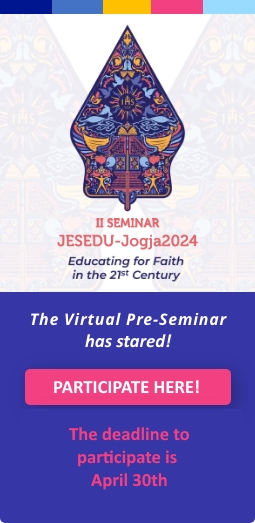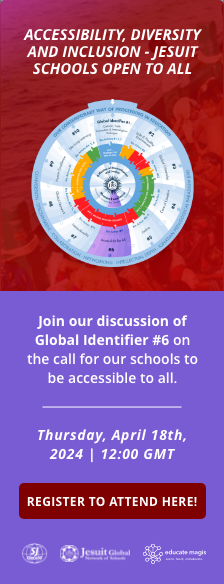Hi, I am Stacy Dainard, a teacher of Social Studies at St. Paul’s High School in Winnipeg, Canada. My experience after taking the Educate Magis Global Citizenship course has been very fruitful. I wasn’t really aware of the course until I became part of the JSN ‘Ad Hoc Global Working Group’ .
To be honest, like many people I am guessing, I was on Educate Magis a fair bit when I first heard about it but sort of went away from it after a little while only visiting it when email updates and prompts would come in. Even with this prompts my time on the website was minimal I guess you could say.
As a long-time teacher of a course at St. Paul’s High School called ‘Global Issues’ and admittedly a news junkie, I have always had an interest in news or events from around North America and the world. During the last school year when an opportunity arose to join a small group being gathered by Catherine Steffens and Fr. Bill Muller SJ, I jumped at the chance to become a part of the ‘Ad Hoc Global Working Group.’ As preparation for the meeting it was suggested that, among other things, we take the Global Citizenship Course on Educate Magis. So, the initial motivation to take the course was as preparation for attending the Ad Hoc meeting in January of 2019.
I learned first that taking the course did not take too much time – which is nice in the middle of a school year! Additionally, the Global Citizenship Course has many resources available for personal reflection, for classroom use etc. There are many videos to support classroom learning objectives and many suggested activities for student learning. As a teacher of Social Studies courses, I was very pleased to find resources that could be easily adapted for my classroom.
The application of this course into my courses has been fairly easy. I have already added some of the videos – for example ‘What Are Human Rights?’ – to my class content. This video was a good way to introduce what may seem as a simple question but can be answered many different ways by many different people.
I also found Lesson Two’s introduction of the UN’s Sustainable Development Goals very helpful. As a way to take the SDGs, which can seem daunting (i.e. ‘No Poverty’ or ‘End Hunger’), the Global Citizenship Course offers the ‘Lazy Person’s Guide to Saving the World’. This guide is a humorous way to offer, in my case, teenagers a way to ‘Save the World’ while being on your couch. This is not to imply that our students are lazy at all. However, the lofty nature of the SDGs can be overwhelming and the ‘Lazy Person’s Guide’ offers some practical tips for individuals to take action.
As words of encouragements to fellow teachers in our global community I would like to say that the Global Citizenship Course will not take too much of your time and I would be very surprised if you completed the course and did not find at least one thing to use in your classroom. Additionally, this course will help you guide students to thinking critically about their world – locally, nationally and globally. Finally, as Ignatian educators I believe this course allows us continue to be life-long learners.

